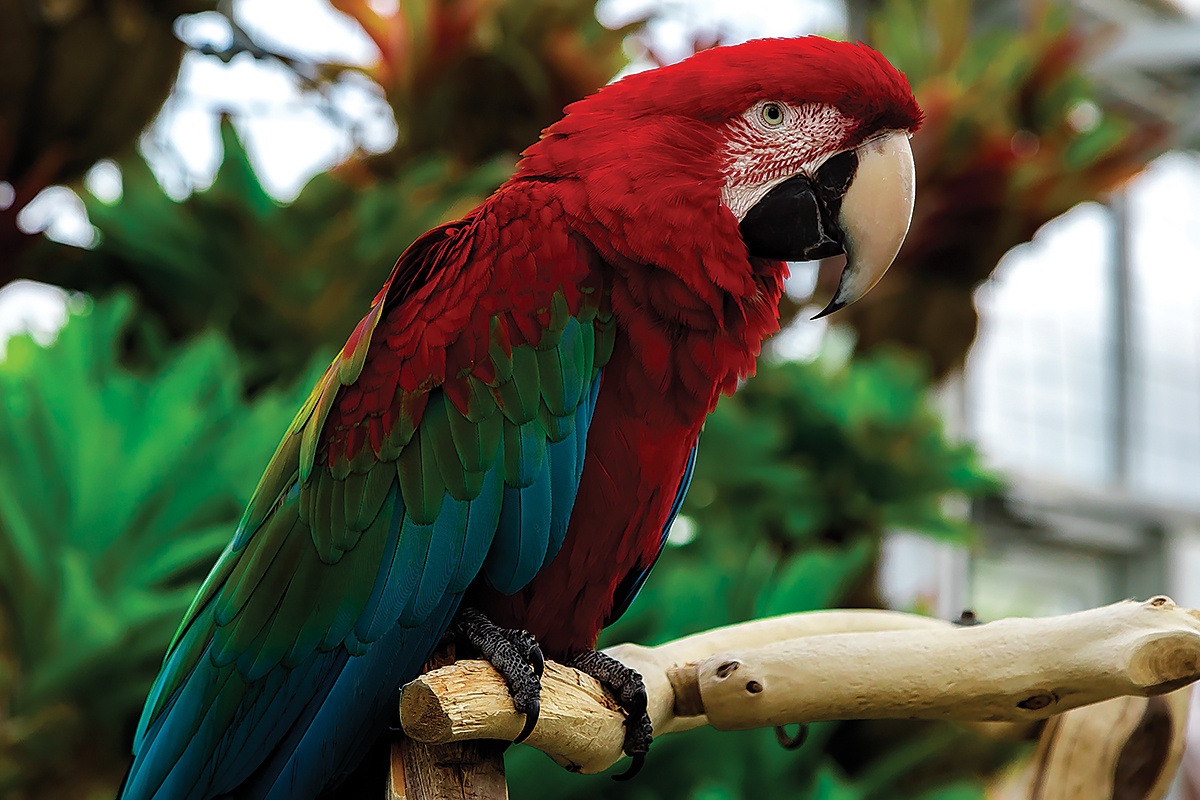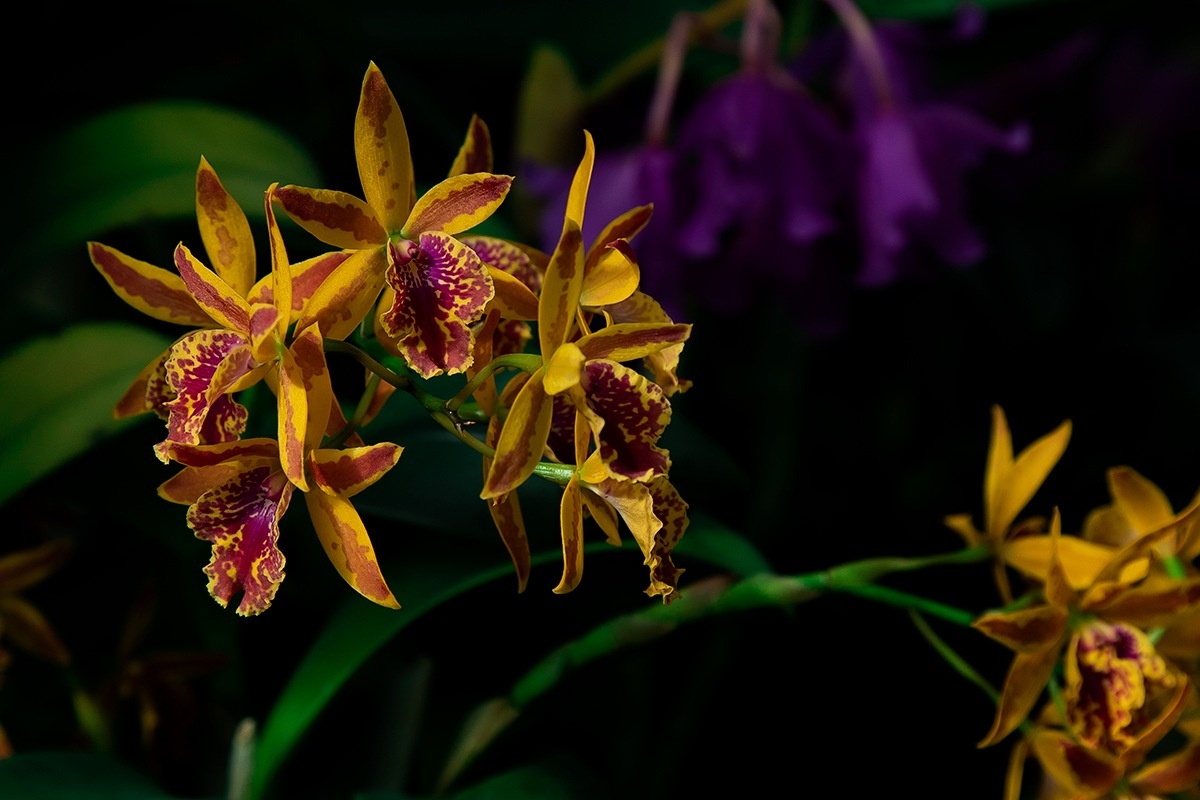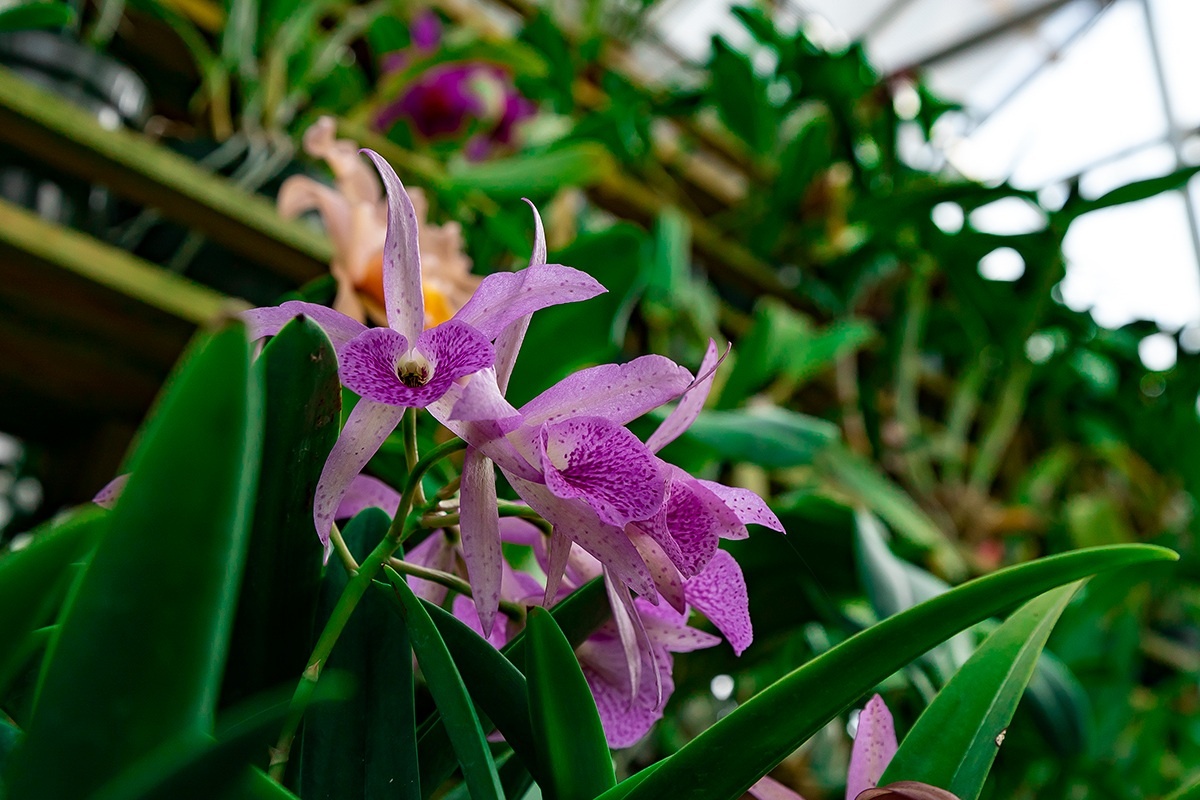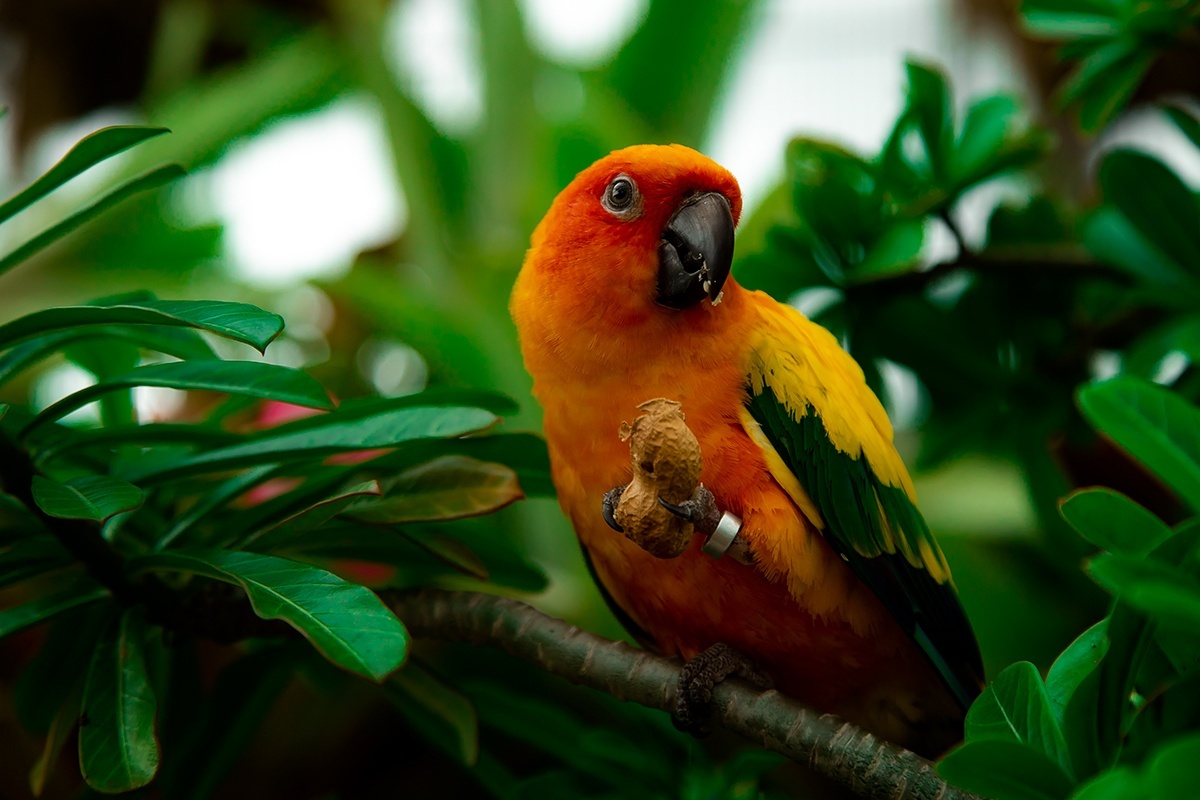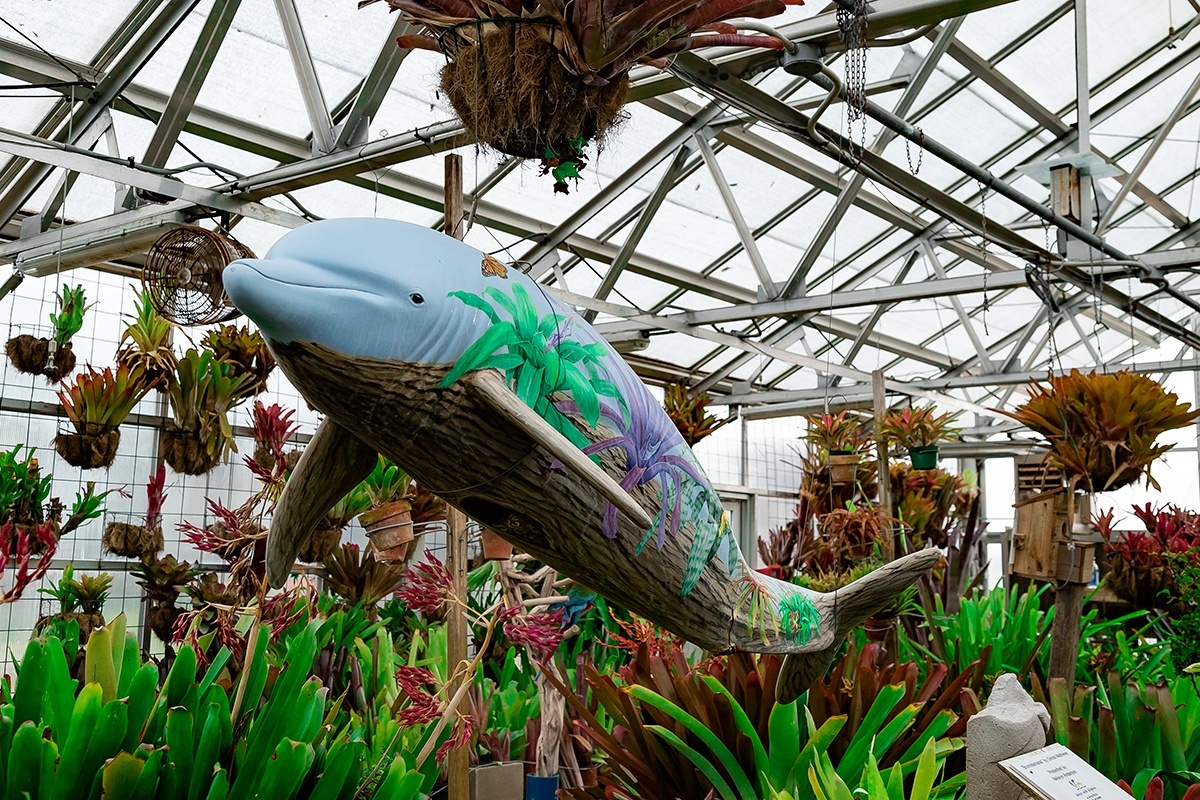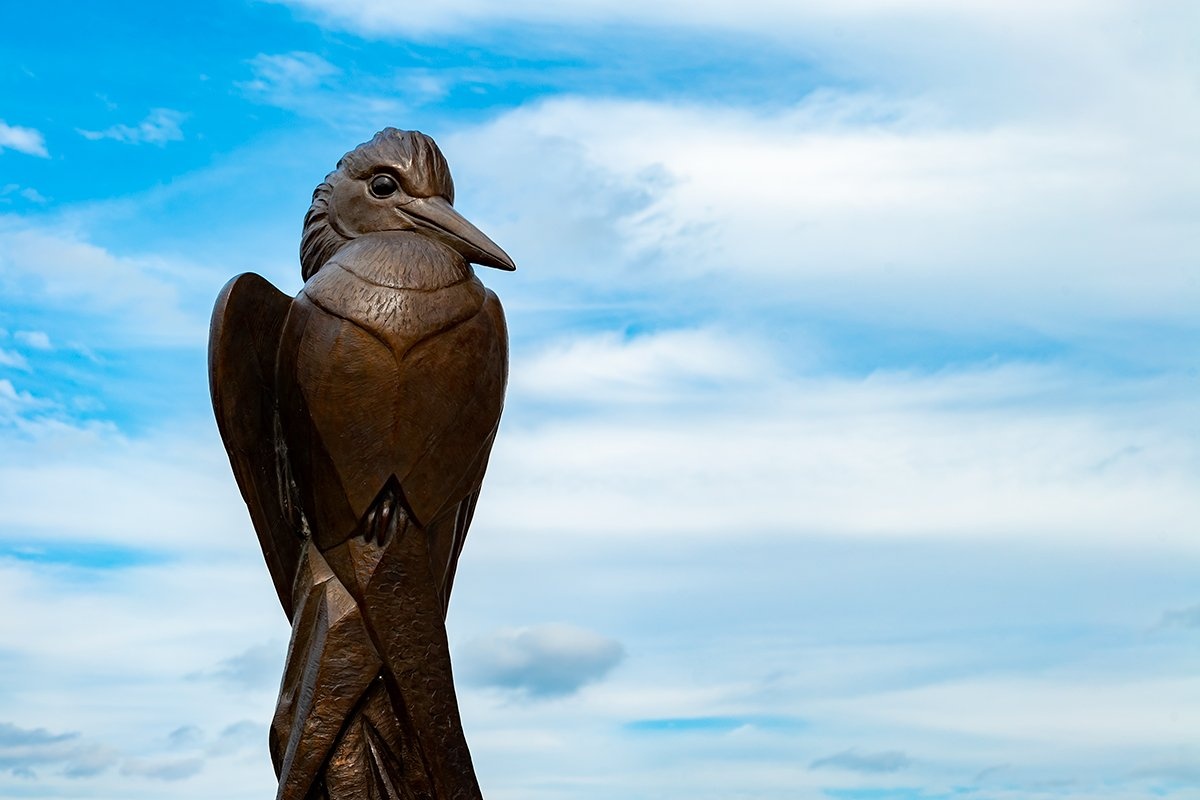Inside the orchid conservatory at the South Texas Botanical Gardens & Nature Center, I’m curious about a bananalike pod dangling from a vine climbing the 14-foot-high walls. “That’s a vanilla bean,” explains volunteer Jorge Garcia. “Vanilla is an orchid native to the Americas.”
Benches in the center of the conservatory overflow with hundreds of orchids parading purple, yellow, pink, red and white flowers. Aerial roots hang down from vanda orchids like long, wavy hairs. “Orchid roots like to come out of the pot,” Garcia says.
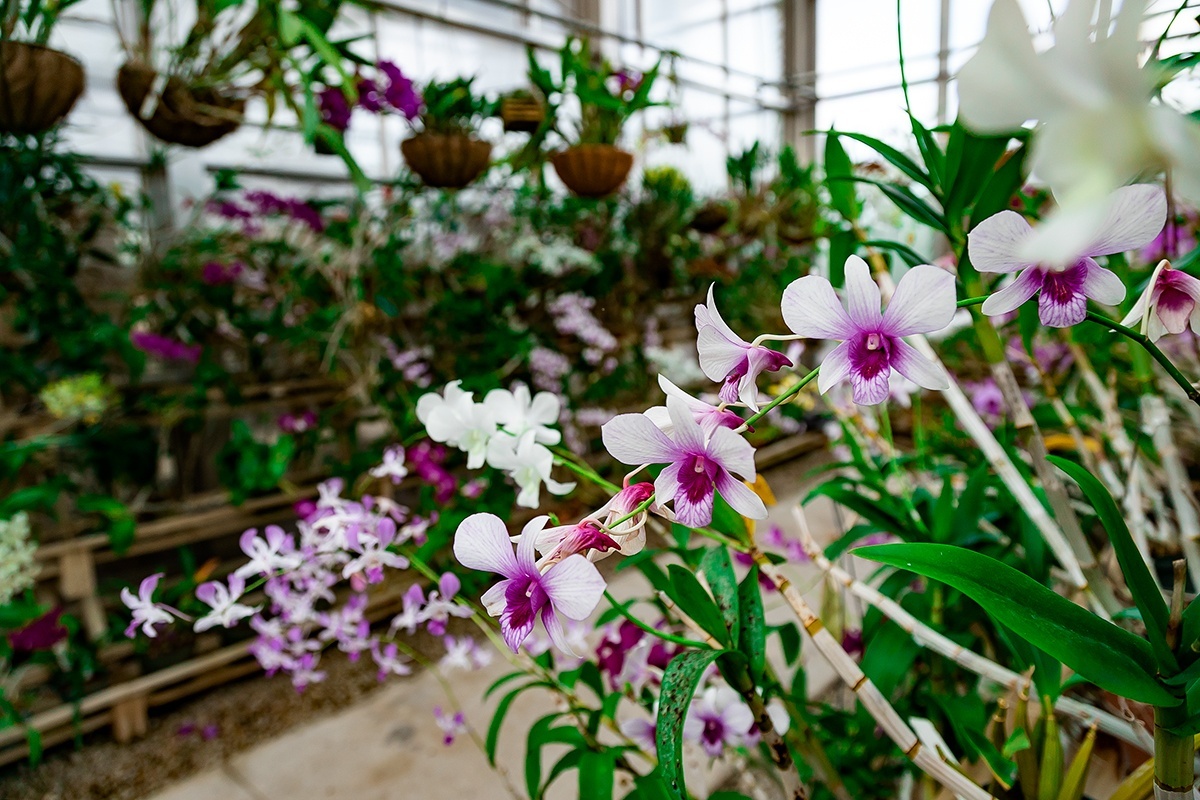
Web Extra: The orchid conservatory contains a diverse variety of species.
Chris Salazar | TEC
Nearby, a screened butterfly house shelters plants that attract monarchs, queens, gulf fritillaries and black swallowtails. Signs identify tropical milkweed, hibiscus and butterfly bushes that butterflies visit to sip nectar or lay eggs. A buckeye with multiple eye spots on its wings flutters around my knees.
My husband, Guy, relaxes on a swinging bench under a cedar elm as I wander through the sensory garden, touching a sandpaper tree, sniffing scented geraniums and marveling at the bright purple clusters of American beautyberry.
We stroll through the bromeliad collection—pineapples, ball moss and living walls of plants—to the hummingbird garden. I spot yellow-striped bumblebees and a buff-bellied hummingbird zipping around the mealy blue sage and Turk’s cap.
Michael Womack, the gardens’ executive director, meets us at the rose garden and guides us down a nature trail’s crushed granite path. Meandering through 165 acres of native thorn scrub and wetlands, the trail sports large interpretive panels that feature photographs of wetland animals from the botanical gardens’ Wildlife in Focus contest.
“We are trying to preserve a natural spot in the middle of Corpus Christi,” Womack says. “This is a safe place to experience nature and see its diversity.”
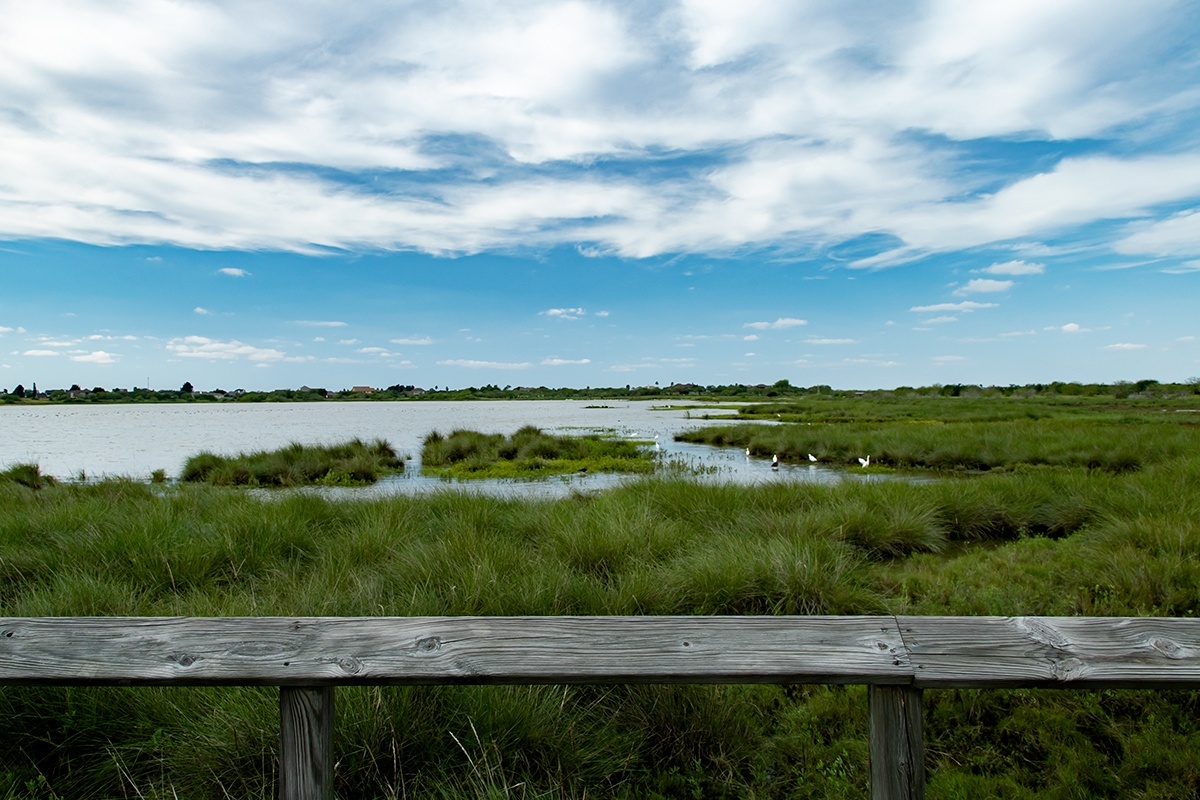
Web Extra: A stroll over the wetlands via boardwalk yields views of native birds and other coastal wildlife.
Chris Salazar | TEC
From the bird tower overlooking a gator lake, we spot coots and black-necked stilts. Boardwalks lead us to a wetland gazebo, where we watch tricolored herons, roseate spoonbills and ibises.
Ecosystems support more than plants and birds, and I’m thrilled to have a slender vine snake twine around my wrist in the visitors center, where guests can interact with about 55 reptiles and 30 parrots.
“Resident reptiles help people see the native reptiles in our region and appreciate brush country habitats,” Womack says.
Huckleberry, a cockatoo, leans into Guy’s hand, tilting upside down to have his neck stroked. I fall for Ivan, a 12-pound green iguana with iridescent orange scales and long claws.
“Tortoises and snakes are the big deal for kids,” says Dedra Benedict, an animal care specialist. “Adults prefer the birds.” Benedict leads parrot talks on Friday, Saturday and Sunday afternoons, showing off the personalities of some of the birds. “They need a lot of attention. People think the parrots are going to do the talking here, but they refuse to learn the script. Macaws, cockatoos and other parrots behave like 2-year-olds.”
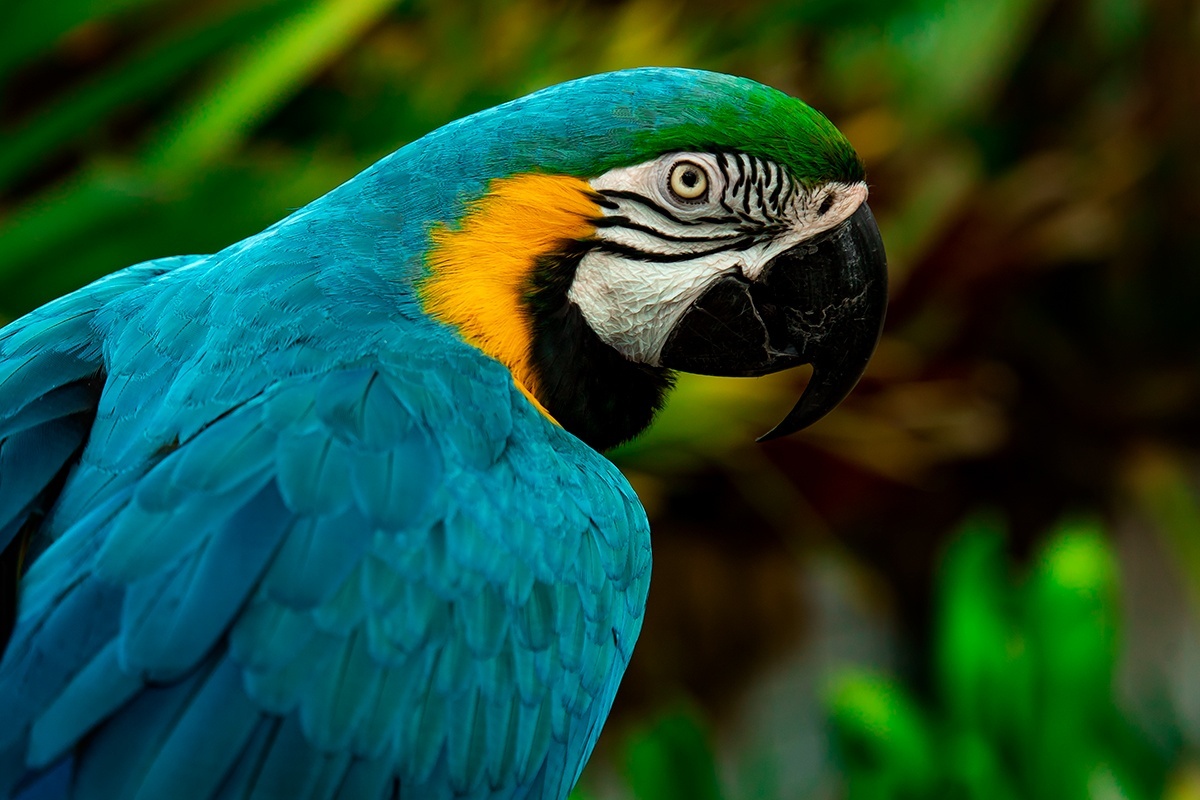
Web Extra: Experience Tequila, a blue and yellow macaw, up close.
Chris Salazar | TEC
Tequila, a blue-and-gold macaw, has a reputation as a dancer, so I wiggle my shoulders at him. Perched on the back of a chair, he begins swaying and bouncing like a bobblehead doll. What a colorful dance partner!
“We want people to make the connection that exotic parrots and reptiles are linked to plants,” Womack says. “The parrots live in forests, which are home to many of our tropical plants.”
Eileen Mattei, a Nueces EC member, is a Texas master naturalist in Harlingen.
